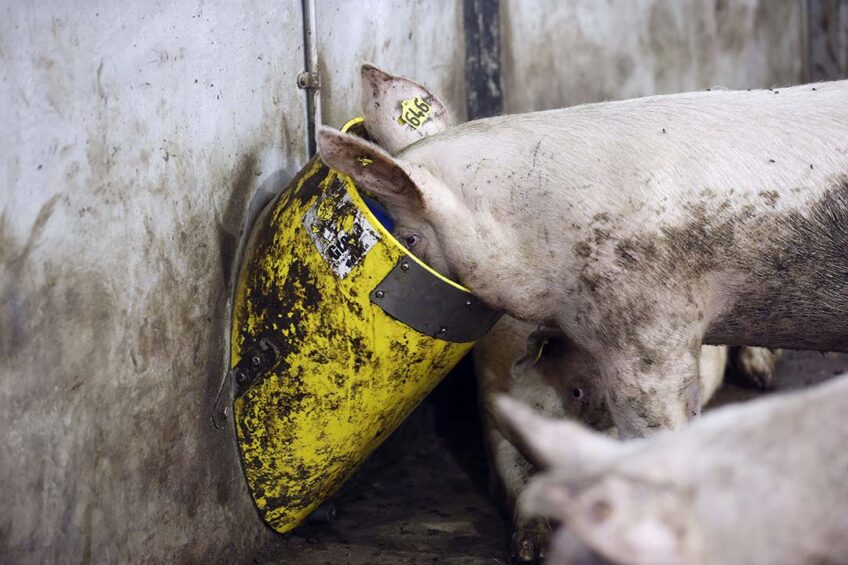Feeding silage reduces stomach ulcers in grower-finishers

There is little knowledge on the effect of feeding roughages including silage on behaviour and gut health. A team of Swedish researchers recently delved into this.
The team published about their findings in the Journal of Animals in a research article published in January 2024. They evaluated the impact of feeding silage with different particle sizes on aggressive encounters and on the occurrence of stomach lesions and ulcers in grower-finisher pigs.
Details of the study
The research team selected 128 grower-finisher pigs (Swedish Yorkshire × Hampshire) for this study. At 9 weeks of age, the team allocated pigs randomly to 8 pens based on birth litter, weaning weight, and sex. They fed the pigs either a commercial control feed without silage, or silage mixed with commercial feed. The pigs received their diet in a pellet or in a total mixed ration with chopped or intensively treated silage.
The team measured feed intake at pen level. They weighed pigs every 2 weeks until they reached approximately 90 kg. After that, the weighing happened once per week. At slaughter, the team collected and evaluated the stomachs from 41 pigs for ulcers. Skin lesions were assessed twice in 5 body regions including front, middle, hindquarters, legs, and ear. In addition, tail lesions and lameness were recorded at each assessment separately.
Impact of silage on pig performance
The pigs ate all diets completely and no feed residuals could be collected during the study. The pigs on the total mixed ration with chopped and intensively treated silage consumed more feed than pigs fed commercial feed mixed with silage in a pellet and commercial control feed without silage. Pigs fed commercial feed mixed with silage in a pellet had the highest daily weight gain. The pigs on the total mixed ration with chopped silage had the lowest daily weight gain.
Impact of silage on stomach ulcers
The pigs fed the total mixed ration with chopped and intensively treated silage had a lower prevalence of gastric lesions and received a lower ulcer score compared to pigs fed commercial feed mixed with silage in a pellet and commercial control feed without silage.
Impact of silage on skin lesions, tail biting, and lameness
Feeding silage had no significant impact on the skin lesions, tail biting, and lameness occurrence in grower-finisher pigs.
Conclusions
The authors concluded that feeding grower-finishers with fresh silage considerably reduced the development of stomach ulcers compared to feeding pelleted silage. However, more research is required to better understand the effect of silage on behaviour and social interactions in pigs.







